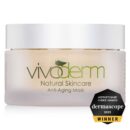Natural Skin Care Therapy Tips for Acne
Acne is not a new problem; people have been suffering from it for many thousands of years. In ancient Egypt for instance, oils were often used to soften and smooth the skin. It is only in recent times that people have begun to use acne creams made of chemical ingredients like benzyl peroxide, among others. These can not only have unwanted side effects, like the drying of healthy skin or the bleaching of clothing, but can be very costly.
It’s no mystery that our grandmothers seemed to know best. When it comes to health and skin, the more natural the ingredient, the better. Of course, there are times when natural remedies may not be as effective and that is Ok. However, just be aware of the natural options you have first, before you waste a lot of money on another product that doesn’t work. Many people today discovering the old-world secrets in caring for their bodies more naturally, and are turning to natural and herbal remedies, such as the following simple ‘kitchen cures’.
Acne Remedy #1: Make a paste of nutmeg powder and milk, and apply to your face in a thin layer. Leave on for up to an hour, or even overnight.
Acne Remedy #2: Take an orange peel and leave it to dry, and then grind it to a powder. Mix with water and apply directly to the pimple.
Acne Remedy #3: Applying garlic directly to a pimple can also be a great remedy, as garlic is a natural disinfectant.
Acne Remedy #4: Mix a spoonful each of fresh lemon juice and cinnamon. Apply to the acne overnight for several nights in a row to be effective.
Acne Remedy #5: Take fresh leaves of fenugreek and grind to make an acne remedy that is also said to be effective in reducing wrinkles. It should be left on for only fifteen minutes.
Acne Remedy #6: Papaya juice, which is high in natural enzymes, makes a wonderful acne solution all on its own.
Acne Remedy #7: Boil a cup of milk, and then allow to cool to room temperature, and add a spoonful of limejuice to make a acne face wash.
Acne Remedy #8: Mix rosewater, cucumber juice and lime juice in equal amounts. Apply to clean face and leave on overnight.
Chemical skin care ingredients you should avoid if you are acne-prone or have oily skin in combination with acne:
• Butyl stearate
• Cinnamon Oil
• Isotearyl isostearate
• Cocoa butter
• Jojoba oil
• Coconut oil
• Decyl oleate
• Myristyl myristate
• Myristyl propionate
• Octyl palminate
• Octyl stearate
• Peppermint Oil
• Isopropyl stearate
• Isopropyl, isostearate, myristate or palmitate
Try several of these natural remedies and see which one is best for you, be aware that it can take several days to have an effect. Make sure you use clean spoons and dishes to mix your remedies, and remember to wash your face as usual in between treatments.









